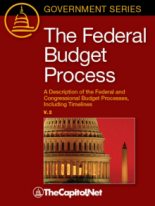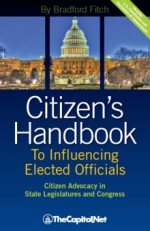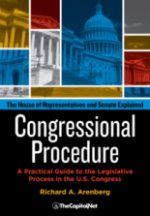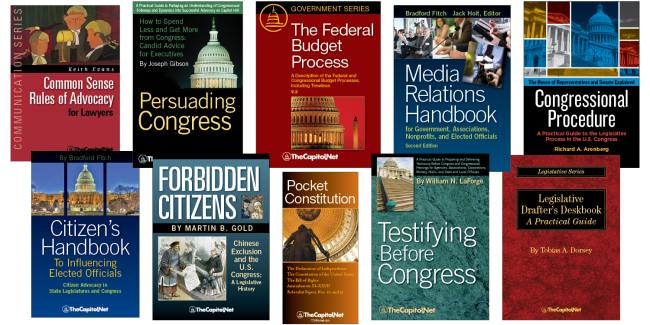From the Congressional Glossary – Including Legislative and Budget Terms
Legislative Branch Agencies / Architect of the Capitol / AOC

To ensure that Congress has independent sources of information from the executive branch to support it in its legislative and oversight responsibilities, Congress formed several legislative branch agencies.
Stone Preservation on Capitol Hill
These legislative branch agencies are the Congressional Budget Office (CBO), Congressional Research Service (CRS), Government Accountability Office (GAO), Government Publishing Office (GPO), and Library of Congress.
Congressional support offices include
- House Office of the Legislative Counsel
- Office of the Law Revision Counsel
- Sergeant at Arms
- Clerk of the House
- House Inspector General
- Historian of the House
- Capitol Police
- Office of the Attending Physician
- Parliamentarian
- Chaplain
- Secretary of the Senate
The Architect of the Capitol (AOC) is responsible to Congress for the maintenance, operation, development and preservation of 17.4 million square feet of buildings and more than 460 acres of land throughout Capitol Hill. This includes the House and Senate office buildings, the U.S. Capitol, Capitol Visitor Center, the Library of Congress buildings, the Supreme Court buildings, the U.S. Botanic Garden, the Capitol Power Plant, and other facilities. The AOC also provides professional expertise with regard to the preservation of architectural and artistic elements entrusted to its care, and provides recommendations concerning design, construction and maintenance of the facilities and grounds. Permanent authority for the care and maintenance of the United States Capitol was established by the Act of August 15, 1876 (19 Stat. 147).
The AOC is also responsible for the upkeep and improvement of the Capitol grounds, and the arrangement of inaugural ceremonies and other ceremonies held in the building or on the grounds. Legislation has been enacted over the years to place additional buildings and grounds under the jurisdiction of the Architect of the Capitol.
Also see Chapter Four, Supporting Congress: Allowances and Staff, in Congressional Deskbook.
Legislative Branch Appropriations
The legislative branch appropriations bill provides funding for the Senate; House of Representatives; Joint Items; Capitol Police; Office of Congressional Workplace Rights (formerly Office of Compliance); Congressional Budget Office (CBO); Architect of the Capitol (AOC); Library of Congress (LOC), including the Congressional Research Service (CRS); Government Publishing Office (GPO); Government Accountability Office (GAO); Open World Leadership Center; and the John C. Stennis Center.
More
- Capitol / Capitol Hill Map / National Mall (CongressionalGlossary.com)
- Capitol Hill: Map, Parking, Buildings, Hotels, Restaurants – TheCapitol.Net
- Legislative Branch Agencies – USA.gov
- Chief Administrative Officers of the House
- Senate Organization Chart
- “Congressional Access to Executive Branch Information: Legislative Tools,” CRS Report RL30966 (66-page PDF
 )
) - “Congressional Oversight,” CRS Report RL30240 (140-page PDF
 )
) - Legislative Branch Appropriations, 2007, S. Rept. 109-267, June 22, 2006 (67-page PDF
 )
) - Legislative Branch Appropriations, 2010, S. Rept. 111-29, June 18, 2009 (65-page PDF
 )
) - Legislative Branch Appropriations, 2012, S. Rept. 112-80, September 15, 2011 (62-page PDF
 )
) - “Legislative Branch: FY2012 Appropriations,” CRS Report R41870 (30-page PDF
 )
) - “Legislative Branch: FY2013 Appropriations,” CRS Report R42500 (28-page PDF
 )
) - “Legislative Branch: FY2014 Appropriations,” CRS Report R43151 (39-page PDF
 )
) - “Legislative Branch: FY2017 Appropriations,” CRS Report R44515 (45-page PDF
 )
) - “Legislative Branch: Fiscal Year 2018 Appropriations,” CRS Report R44899 (43-page PDF
 )
) - “Legislative Branch: FY2019 Appropriations,” CRS Report R45214 (40-page PDF
 )
) - “Legislative Branch: FY2020 Appropriations,” CRS Report R45755 (40-page PDF
 )
) - “Legislative Branch: FY2021 Appropriations,” CRS Report R46469 (40-page PDF
 )
) - “Legislative Branch: FY2022 Appropriations,” CRS Report R46936 (44-page PDF
 )
) - “Legislative Branch: FY2023 Appropriations,” CRS Report R47296 (43-page PDF
 )
) - “Legislative Branch: FY2024 Appropriations,” CRS Report R47624 (44-page PDF
 )
) - “Legislative Branch Appropriations: Frequently Asked Questions,” CRS Report R43397 (14-page PDF
 )
) - “Support Offices in the House of Representatives: Roles and Authorities,” CRS Report RL33220 (24-page PDF
 )
) - “Legislative Branch Agency Appointments: History, Processes, and Recent Actions,” CRS Report R42072 (21-page PDF
 )
)
Capitol Dome Restoration
Courses
- Congressional Operations Briefing – Capitol Hill Workshop
- Drafting Federal Legislation and Amendments
- Writing for Government and Business: Critical Thinking and Writing
- Custom Training
- Congressional Operations Poster, with Federal Budget Process Flowchart
- Federal Budgeting, a Five-Course series on CD
- Congress, the Legislative Process, and the Fundamentals of Lawmaking Series, a Nine-Course series on CD
Publications

The Federal Budget Process 2E |

Pocket Constitution |

Citizen’s Handbook to Influencing Elected Officials: A Guide for Citizen Lobbyists and Grassroots Advocates |

Congressional Procedure |
CongressionalGlossary.com, from TheCapitol.Net
For more than 40 years, TheCapitol.Net and its predecessor, Congressional Quarterly Executive Conferences, have been teaching professionals from government, military, business, and NGOs about the dynamics and operations of the legislative and executive branches and how to work with them.
Our custom on-site and online training, publications, and audio courses include congressional operations, legislative and budget process, communication and advocacy, media and public relations, testifying before Congress, research skills, legislative drafting, critical thinking and writing, and more.
TheCapitol.Net is on the GSA Schedule, MAS, for custom on-site and online training. GSA Contract GS02F0192X
TheCapitol.Net is now owned by the Sunwater Institute.
Teaching how Washington and Congress work ™

